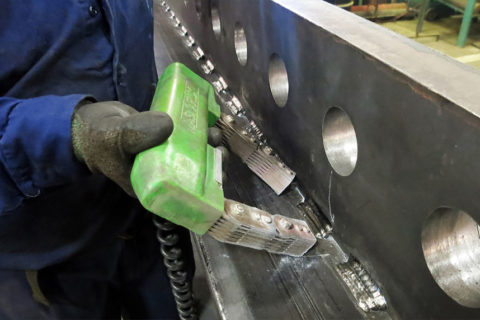Magnetic particle Testing (MT) is used to locate surface and slightly subsurface discontinuities or defects in ferromagnetic materials. Such flaws present in a magnetized part will cause a magnetic field i.e. flux, to leave the part.
If the magnetic particles are applied to this surface, they will be held in place by the flux leakage to give a visual indication. A magnetic particle test will be conducted by creating a magnetic field in a part and applying the magnetic particles to the test surface.
Our experts utilize Magnetic Particle Testing to detect surface and near-surface flaws and defects. It is fast and relatively easy to apply, and surface preparation is not as critical as compared to other NDT methods. We offer both on-site and in-house services as per your requirement.

